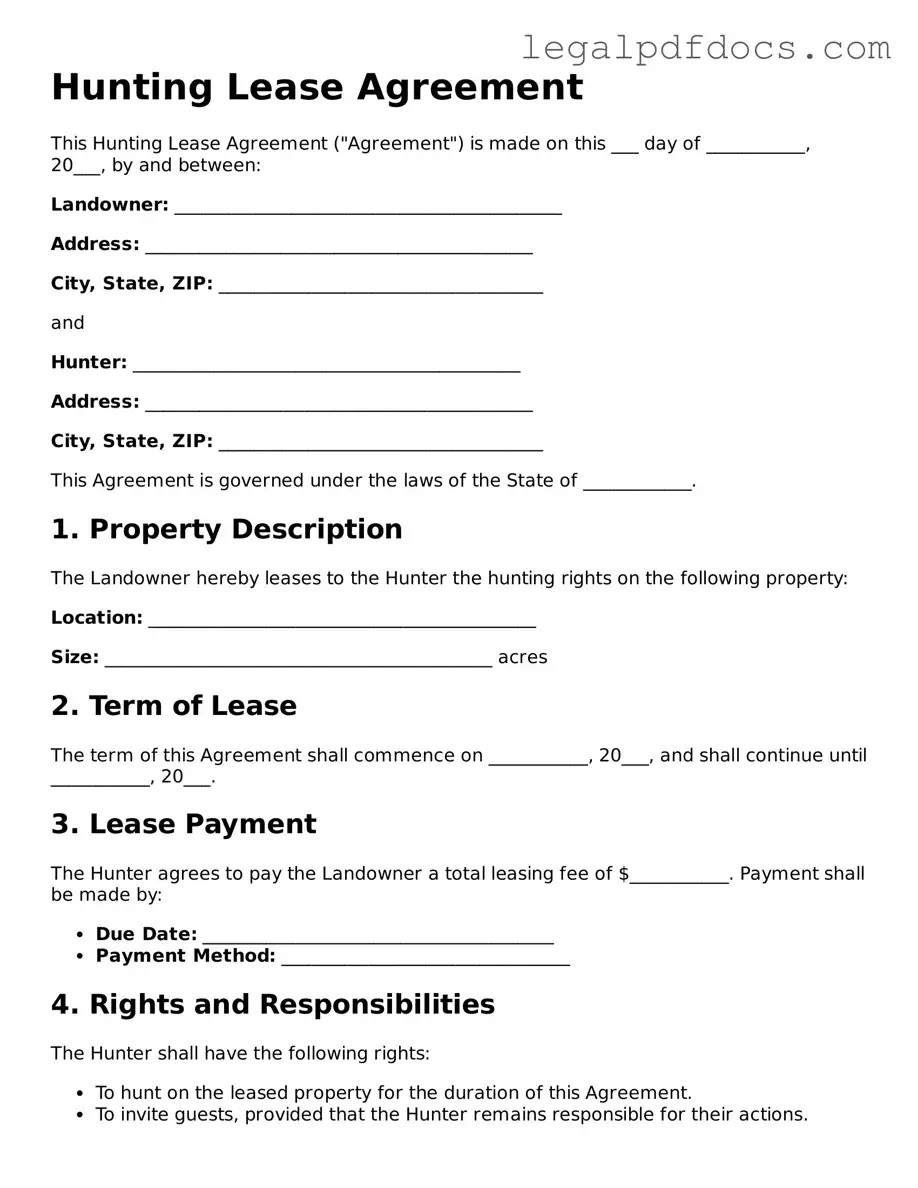Hunting Lease Agreement Template
A Hunting Lease Agreement is a legal document that outlines the terms under which a landowner permits individuals or groups to hunt on their property. This agreement protects the rights and responsibilities of both parties, ensuring a clear understanding of what is allowed during the hunting season. For those interested in hunting on leased land, filling out this form is an essential step to ensure compliance and mutual respect.
To get started, click the button below to fill out the Hunting Lease Agreement form.
Open Hunting Lease Agreement Editor Here
